

Landscape Architecture Portfolio
Dana Ladd
01: pg. 3-5
02: pg. 6-9
03: pg. 10-12
04: pg. 13-15
05: pg. 16-18
06: pg. 19-20
07:







Location: Los Angeles, CA and Austin, Texas
Year: Summer 24’
Role: Project Manager and Designer
This reimagining of Augustus F. Hawkins Nature Park in South LA centers on longterm resilience, ecological health, and community pride. Through public engagement, historical analysis, and iterative design, our team developed strategies that expand existing habitats, improve access to green space, and support educational and economic growth. My role as Project Manager enabled me to both be the team motivator and organizer and designer.
DESIGN WORKSHOP

LEGEND








DILEMMA
of environmental
and resilience, build strong community
and connections, and evolve witH tHe cHanging values and priorities of tHe community to increase accessibility, expand educational opportunities and integrate new and creative ways to provide economic resiliency?
augustus f. Hawkins park is a vital green space in soutH los angeles tHat must integrate sustainable design and inclusive programs to preserve its:
• historical legacy
• address modern challenges














THE COMMUNITY | PUBLIC ENGAGEMENT 1
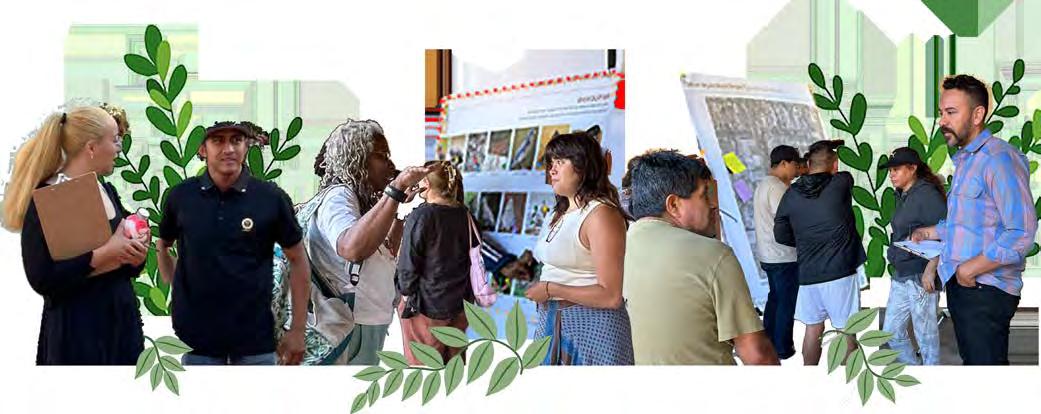
“I like the green areas to play with my little brother.”
“I like the pond, ducks, and turtles!”
“I











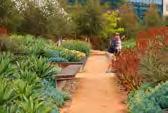


Board Game Exploration
How can a board game breakdown complex issues such as Coastal Resiliency infrastructure?
Location: NYC, NY
Year: Fall, 24’
Role: MLA Student
SEA - WARD RETREAT
This collaborative board game invites players to explore floating wetland communities as adaptive solutions to sea-level rise. Through role-based play and resource balancing, players envision modular cities that blend human needs with ecological systems, challenging dominant narratives of climate retreat.
This was a speculative CCNY Studio project that inspired me to continue exploring this beyond this semester...
A BOARD GAME







SEAWARD RETREAT


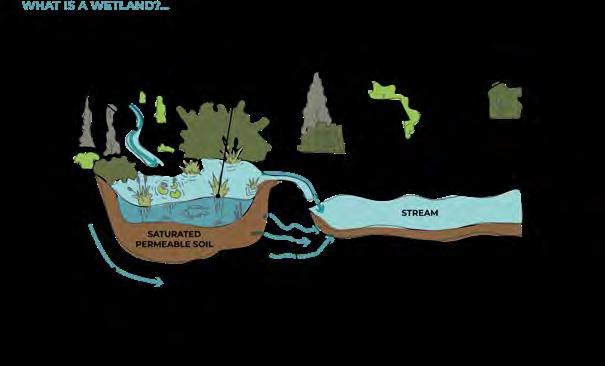



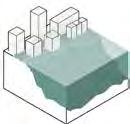











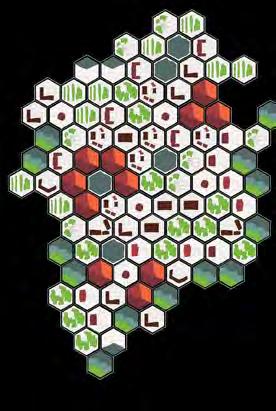

WELCOME TO SEA-WARD RETREAT
SEA-WARD RETREAT ROLES
Team Goal: Achieve the Scenario Goal by balancing resources through strategic tile placements.
Individual Goals: Each player has secret objectives that contribute to the overall success.
Winning the Game
Complete the Scenario Goal before tiles run out, with no resource below 40.
Losing the Game
Any resource (RP, LP, BP, EP) falls below 25.
Seaward Retreat is a collaborative strategy game designed to challenge players to build a sustainable floating island system that adapts to rising sea levels while balancing resources. The game unfolds in three phases, each reflecting different sealevel scenarios.
SETUP AND PLAY
Event Phase
At the end of each round, draw a WILD Card and apply its effects. These may include:
• Natural disasters reducing resource points.
• Bonuses for placing specific tiles.
Mid-Game Shift (Firing Players)
At the end of the initial 40-tile phase, evaluate secret objectives:
• Successful Role: Players who meet their secret objectives stay in the game and retain their roles.
• Failed Role: Players who fail their objectives can no longer place tiles but may negotiate with active players.
• If two players fail, the game ends
Final Phase (Communal Play)
• Once the initial 40 tiles are used, the remaining 60 communal tiles are drawn one at a time.
• Players must now work together to meet the Scenario Goal, focusing on team success.
1. Economist: Maximize Economic Points (EP).
2. Steward: Focus on Biodiversity (BP) and Resiliency (RP).
3. Connector: Enhance Livability Points (LP).
4. Planner: Manage events, enforce constraints, and track resources.
POINT KEEPING
1. Total resource pool at the start of the game = 100 RP/LP/BP/EP (default tracker settings).
2. Secret goals should not exceed 50% of the tracker total
3. Allocate ranges based on role priority:
SETUP AND PLAY
1. Place the game board with the chosen location overlay.
2. Blindly choose a role from the Role Deck
3. Shuffle the Tile Deck and distribute 10 tiles to each player.
4. Place starting markers on the Resource Tracker.
5. Draw a Scenario Card to define the team’s win conditions.
1. Phase 1: Present-Day Conditions.
2. Phase 2: Moderate Rise (10+ ft).
3. Phase 3: Extreme Rise (30+ ft).
Two players fail to meet their secret objectives.
1. Biodiversity Points (BP)
2. Resiliency Points (RP)
3. Livability Points (LP)
4. Economic Points (EP)
TILES
Each tile impacts the Resource Tracker:
1. Natural Tiles
2. Community Infrastructure
3. Economic Infrastructure
4. Energy and Water Infrastructure
5. Housing Infrastructure
- Single Family Housing: +5 LP, -2 BP.
- Multi-Family Housing: +10 LP, -5 BP.
- Special Housing: +8 LP, -3 RP.
- Wetlands/Mangroves: +10 RP, +10 BP, -5 EP.
- Forested Islands: +8 RP, +10 BP.
- Edible Landscapes: +5 RP, +10 EP.
- Energy Cells: +20 EP. - Water Processing Plants: +10 EP, +5 BP. - Sewage Processing: +8 BP, -3 RP.
- Trade Workshops: +15 EP, -2 BP. - Agriculture: +10 RP, +10 EP. - Fisheries/Nurseries: +10 EP, +10 BP.
- Markets/Retail Spaces: +15 EP, -5 RP.
- Educational Buildings: +10 LP, +5 RP.
- Community Centers: +8 LP, +5 RP.
- Parks & Recreation: +10 LP, +5 BP.
- Cultural Hubs: +15 LP, -3 BP.
- Marina: +8 LP, +10 EP, -5 BP.
- Offices: +10 EP, -3 RP.



















• Primary Role: High range (e.g., 40–60).
• Secondary Role: Medium range (e.g., 20–40).
• Tertiary Role: Low range (e.g., 10–20).
• Planner Role: Ensures resources do not drop below a threshold.
Biodiverse Hub:
1. Each player places 1 tile from their hand, adhering to zone constraints and optimizing their secret goals.
TRACKER
1. After each turn, the Planner adjusts resource points (RP, BP, LP, EP) based on tile effects and Event Cards.
SCENARIOS COMPONENTS
- Objective: 80 RP, 50 LP, no resource below 40.
- Steward (Primary): RP = **40–60**.
- Connector (Secondary): LP = **20–40**.
- Economist (Tertiary): EP = **10–20**.
- Planner: Keep all resources above **40**.
Resilient Community
- Objective: 100 LP, 60 BP, at least 3 Energy Tiles.
- Connector (Primary): LP = **40–60**.
- Steward (Secondary): BP = **20–40**.
- Economist (Tertiary): EP = **10–20**.
- Planner: Keep BP above **30** and ensure 3 Energy Tiles.
Economic Growth
- Objective: 120 EP while maintaining RP above 30.
- Economist (Primary): EP = **60–80**.
- Steward (Secondary): RP = **20–40**.
- Connector (Tertiary): LP = **10–20**.
- Planner: Ensure RP does not drop below **30**.
Social Harmony
- Objective: 90 LP, 50 RP, with 6 Social Infrastructure Tiles.
- Connector (Primary): LP = **40–60**.
- Steward (Secondary): RP = **20–40**.
- Economist (Tertiary): EP = **10–20**.
- Planner: Ensure at least **6 Social Tiles** are placed.
Energy Independence
- Objective: 80 EP, with at least 2 Energy Tiles in each water depth zone.
- Economist (Primary): EP = **40–60**.
- Connector (Secondary): LP = **20–40**.
- Steward (Tertiary): BP = **10–20**.
- Planner: Ensure 2 Energy Tiles in each zone.
Sustainable Food Systems
- Objective: 60 RP, 80 EP, with 5 Agriculture Tiles.
- Economist (Primary): EP = **40–60**.
- Steward (Secondary): RP = **30–40**.
- Connector (Tertiary): LP = **10–20**.
- Planner: Ensure 5 Agriculture Tiles are placed.
Balanced Growth
- All Roles (Equal Priority): Each role’s secret goal = **15–25 in their respective resource**.
- Planner: Maintain balance across all categories.
- Objective: Achieve 60 in all resource categories (BP, LP, RP, EP).




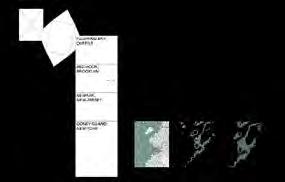

Harlem Playscapes
Youth-Centered Networks of Joy and Learning
Location: Harlem, NYC
Year: Spring 24’
Role: Student Team Member (Scout Kerensky-Coodley)
An exploration of Harlem’s public space potential through inclusive, youthcentered playscapes. We investigated ways to reprogram underutilized infrastructure into joyful, community-rooted environments that support learning, play, and intergenerational connection.
This studio supported so much growth in technical and verbal skills across the board.
CCNY SPITZER SCHOOL
03




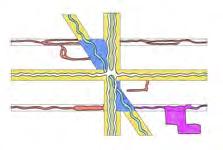





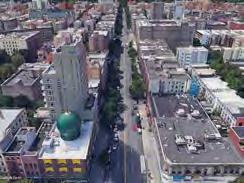


Urban Farms and Gardens
Digging into Place, Memory, and Food Sovereignty
Location: Newark, NJ and Constanza, DR
Year: 2018-2021
Role: Designer, Gardener/ Farmer and Collaborator
I’ve worked with community members to design and sustain gardens rooted in food justice and cultural resilience.
Whether planting with youth in urban gardens or learning from local matriarchs about food sovereignty in the DR, I’ve approached each site as a collaborator and listener. These experiences shaped my belief that growing food is not just about survival — it’s about autonomy, joy, and building futures together.
“EYE” ON DESIGN

RABBIT HOLE FARM


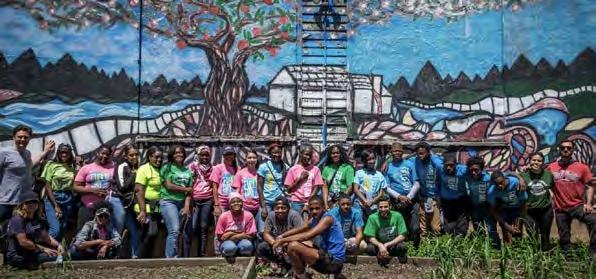






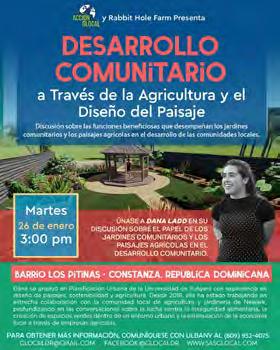





Hilltop Harvest
Designing
for local food systems and community care in Brooklyn.


Location: Brooklyn, NY
Year: Fall 23’
Role: Student
Though our studio focused on Prospect Park, I looked outward — imagining how nearby vacant land could strengthen Brooklyn’s local food systems. “Hilltop Harvest” is a speculative community garden that connects existing gardens and farmers markets to create a more resilient neighborhood network.
The design includes accessible paths, raised beds, and flexible gathering space to support growing, learning, and rest.
CCNY SPITZER
Hilltop Harvest


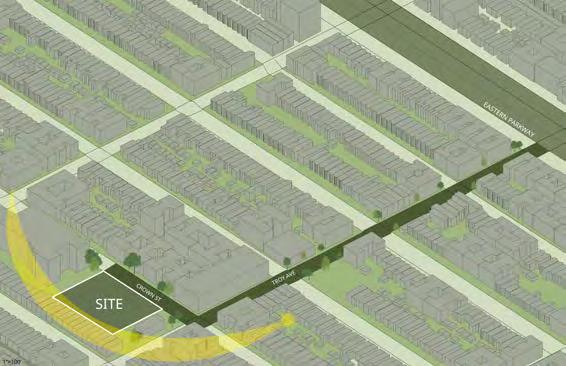









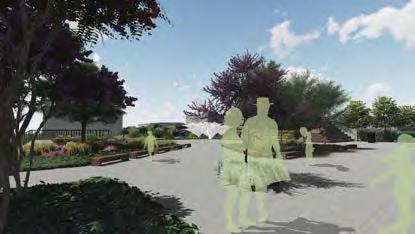

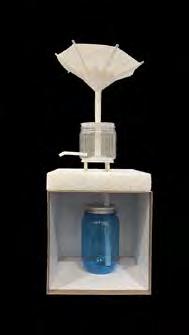

To water the plants, I designed rainwater harvesting umbrellas. The goal is for the water to be captured into this rainwater barrel which is connected to a hose that can water the plants on site. The overflow of the water goes into a cistern below which can be accessed by a pump. The model (to right) is 1/2inch = 1ft. the umbrella is 16’ in diameter, and 12 feet tall.
The programming of the garden will be monitored by the three fulltime jobs that will be created on the garden: the farm manager, the events/volunteer coordinator and the education leader. The rest of the labor will be maintained through volunteer help. The main income shall be the produce, which can roughly produce 5,300 lbs of produce a year. This along with grant, donations and community support will aim for the garden to continue to be up and running for years to come.
Mapping Resilience
Mapping layered crises and local resilience in a colonized context.
Location: Puerto Rico, U.S.A Year: Spring 25’ Role: Student
This module focused on the layered systems that have shaped life in Puerto Rico—colonial governance, extractive infrastructure, and top-down planning— revealing how repeated institutional failures have impacted communities across the archipelago. Through mapping, I visualized the cycles of neglect and the powerful local responses rooted in mutual aid, care, and self-determination. This work set the foundation for my ongoing project in Los Sures, Brooklyn, where I continue to explore resilience, memory, and spatial justice within Puerto Rican communities in diaspora.
SPITZER

CCNY



how historical injustices, policy failures, and weak interventions compound over time, turning short-term crises into long-term collapses (Rivera & Rolke, 2018).

The Sankey Diagram (Figure 2) applies the Social Determinants of Health (SDH) framework, showing how the hurricane’s immediate impacts—on infrastructure, health, and the environment—led to long-term crises in economic stability, healthcare, and food security (Méndez, 2020). These outcomes were not incidental; they were the result of systemic neglect (Rivera & Román, 2020).
Finally, the Timeline (Figure 3) traces Puerto Rico’s historical trajectory—from Spanish colonial deforestation (Scarano, 2009) to U.S. economic dependency and modern-day austerity under PROMESA (Ayala & Bernabe, 2007). The storm may have been inevitable, but the disaster was preventable.
BREAK THE CYCLE. The path forward lies not in rebuilding what was broken, but in addressing the policies that made the disaster inevitable (Kelman, 2020). Only by acknowledging this systemic failure can we build true resilience.







































Deep research and application into the components and systems of rain gardens
Location: Jersey City, NJ
Year: Fall 24’
Role: Student
Rain Garden Brackish Water Combination Exercise
This project began as a toolkit to support rain garden design across Jersey City, organizing native and brackish-adapted plants by tolerance zone. Building on that framework, I developed a detailed planting plan tailored to a specific site condition and combination, illustrating how the toolkit can guide adaptive, communityled implementation across changing coastal environments.


Central Trees/Shrubs (Slope Zone) Use Marsh Elder, Groundsel Bush, and Winged Sumac for height and structure.
Mix Wax Myrtle, Virginia Glasswort, and Groundsel Bush to create a tiered look in the slope zone.
Ivafrutescens (MarshElder)


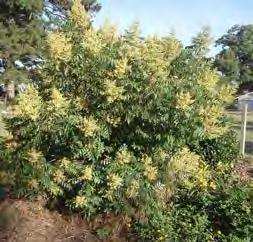





Spread Saltmarsh Aster, Swamp Rose Mallow, and Swamp Milkweed to add seasonal color and texture.
Establish Smooth Cordgrass, Soft-stem Bulrush, and Saltgrass for soil stability.

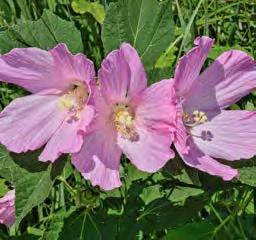

Herbaceous Layer (Base) Groundcover









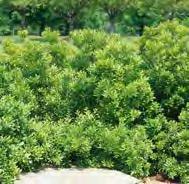

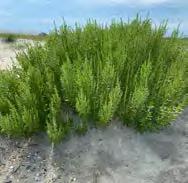

Other Skills, Passions and Projects...
On the following pages are glimpses into the other sides of my practice — creative projects, technical skills, and professional experience that have shaped how I design.
From sketching buildings I love and experimenting with materials, to detailed grading plans and planting designs, these projects reflect both my curiosity and my training. Some were built, some imagined, but all taught me something — about process, craft, and staying connected to the people and places I design for.


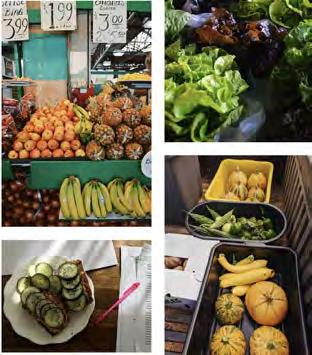















A hand model made of materials such as foam, wooden sticks, cardboard, natural material (twigs), toothpicks, paint and printed out paving patterns. This model is a first attempt at ever doing hand modeling.












SUITE | AUTOCAD|HANDSKETCH


I have experience in design for residential landscapes of all scales. Constructions have included expansive hardscaping, detailed planting plans, and furniture placement. Depending on the client, designs have either been in color or black and white and made to


I have experience in design for residential landscapes of all scales. Constructions have included expansive hardscaping, detailed residential landscapes of all scales. expansive hardscaping, detailed placement. Depending on the client, or black and white and made to understand.
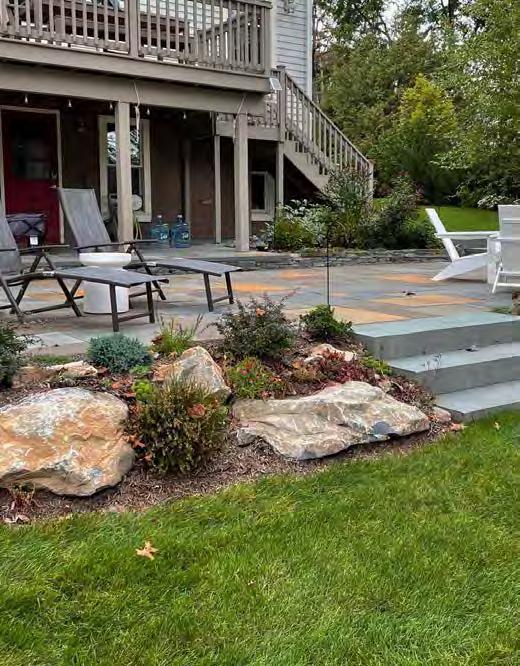



ADOBE SUITE | AUTOCAD|HANDSKETCH

